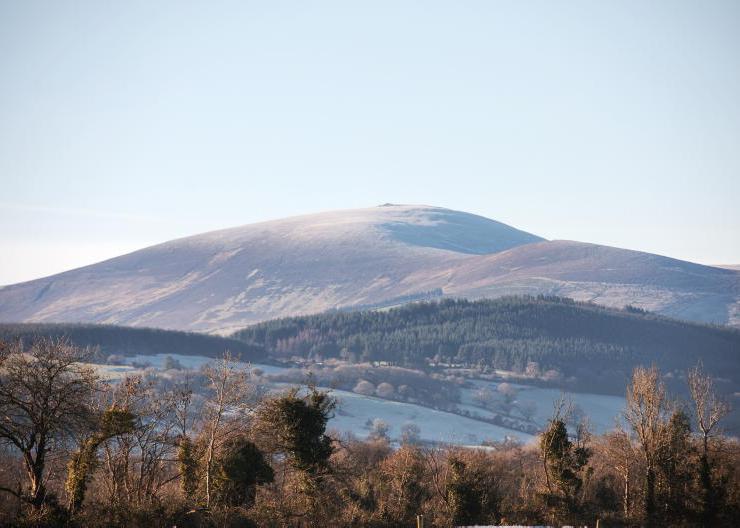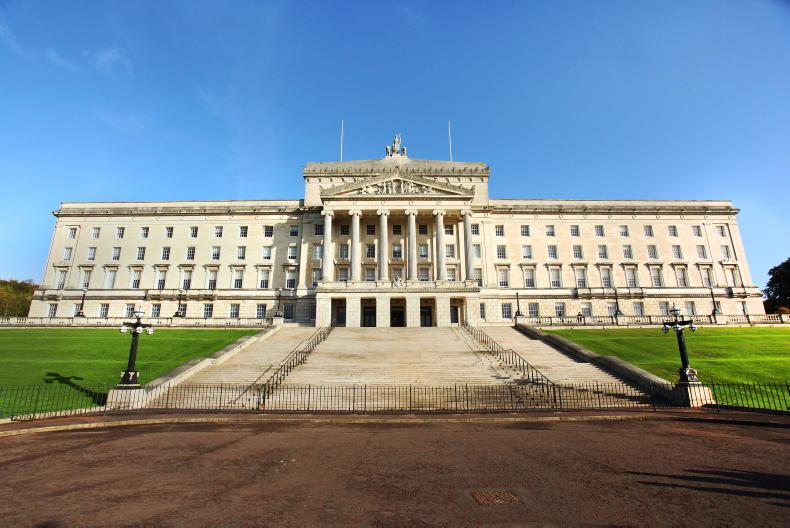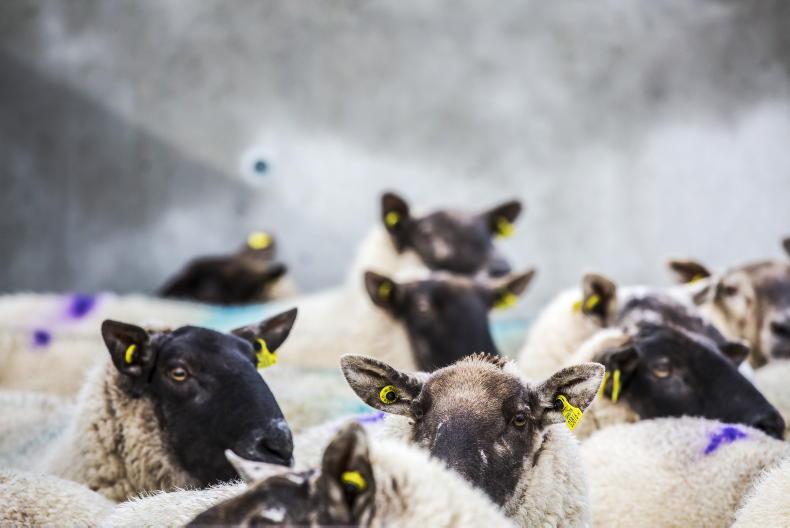The Dutch nitrogen crisis, which resulted in farmer protests, has paralysed the farming, construction and transport sectors for the past few years.
Having failed to adequately address their environmental issues, a legal challenge has forced the government into drastic action.
The whole experience may well be a taste of just how challenging the green transition will be. It serves as a warning that kicking the can down the road on environmental issues can mushroom them and result in a much worse fate.
Some Dutch farmers are now threatened with compulsory purchase of their farms, while the rest are unable to develop and have no certainty about the future operating model for the sector.
Electoral success doesn’t change legal reality
Having vented their fury through protests, farmers channelled their anger into recent electoral success. The Farmer-citizen movement took 16% of the vote in the recent provincial elections which determine the composition of the Dutch Senate. Their election success may hamper delivery of the government’s policy to deal with the crisis. However, the legal reality facing Dutch farmers remains unchanged. The country has to deal with the accumulated nitrogen and wider environmental issues.
The legal reality facing businesses and farmers in the Netherlands does not change, however. The country has to deal with the nitrogen issue and wider environmental issues built up over decades.
The Dutch experience should serve as a cautionary tale for other jurisdictions, including Ireland. A serious deficiency in sufficiently dealing with environmental challenges has now left Dutch businesses, in particular farmers, hugely exposed and facing an uncertain future.
It is also notable that a relatively small but otherwise powerful environmental NGO used European environmental legislation and the courts to force drastic action. Its operating model is very simple – when the government fails to adhere to the law, it sues.
Background
While nitrogen emissions in the Netherlands almost halved since the mid 1980s, they remain high in many areas. The Netherlands has one of the highest nitrogen balances in the EU at almost twice the European average. Nitrogen balance is the ratio between nitrogen added to an agricultural system and the nitrogen removed from the system per hectare.
In 2017, a relatively small but powerful Environmental NGO, Mobilisation for the Environment (MOB), took a case to the European Court of Justice (ECJ) against two Dutch provincial executives.
In 2018, the ECJ ruled against the Dutch government. The case centred on the government’s system which was set up to protect Natura 2000 areas, which are vulnerable nature areas protected by EU law, against nitrogen pollution.
The system in question, known as an integrated approach to nitrogen (PAS), was introduced in 2015 and planned to cut nitrogen levels, protect vulnerable nature areas and give way for economic development.
For farmers, it enabled continued investment and development as long as they invested in mitigation measures such as air scrubbers.
Development permits suspended
In May 2019 the Netherlands’ highest court implemented the ECJ ruling that the government’s strategy for reducing excess nitrogen in vulnerable nature areas was in breach of EU law. The Netherlands had to cease granting permits for activities that lead to the deposition of nitrogen in protected nature areas. Permits for construction and transport projects and expansion and development of pig, poultry and dairy farms were suspended as a result.
In June 2022 the Dutch cabinet announced draconian measures to comply with the court’s decision. It plans to cut nitrogen emissions by between 50% (up to 70% around special nature areas) by 2030.
A budget of almost €25 bn has been earmarked to deal with nitrogen emissions across all sectors. In farming, this includes the compulsory purchase of farms near Natura 2000 areas, production cuts for others and rapid adoption of mitigation strategies.
The government policy was not just focused on emissions reduction, but also water quality challenges.
Lessons from the
Dutch experience
The scale of the environmental challenges facing farmers and the Dutch government is far greater than that of Ireland. However, there are lessons to heed from their experience. Reducing livestock production in the Netherlands may not have been avoided.
However, it’s reasonable to question if earlier, more assertive policy action would have yielded greater environmental results and better safeguarded farmers in the long term.
Is it naive to think continued economic growth is compatible with the green transition?
The Dutch experience indicates that addressing their significant environmental challenges and continued production growth proved incompatible. Should this be a concern for the dairy sector in Ireland?
As expansion of cow numbers and production continues as emissions and environmental challenges are being addressed, it is reasonable to consider if each additional cow ultimately increases the risk to the existing herd in the long run.
Have farmers confidence their actions will stand the test of time?
The Dutch experience indicates that farmers need absolute confidence that the measures and decisions they are undertaking today, for example in relation to nitrates, in the fullness of time will be the correct measures and meet the approval of both the Department of Agriculture and the Environmental Protection Agency.
Have the “what ifs” been sufficiently and openly debated?
The Dutch experience also suggests that a much more honest and robust discussion is needed about the implications of not meeting legally binding targets set in either national or EU legislation.
Farmers, processors and industry partners should have an understanding of the impact of not reaching binding targets and possible subsequent government / policy actions. In that way individuals and businesses can make better informed decisions and manage their own risk.
Could future legal challenges lead to drastic action?
The extent of national and European environmental legislation means that environmental NGOs, with access to sufficient resources, may take legal action to force the Government to adhere to the law. This type of action has already begun in Ireland. Should such an action be successful it could result in crude and drastic measures being employed to deal with environmental challenges.
Many challenging unanswered questions remain for Irish farming in the green transition. Key among them is the extent to which production, in particular in the dairy sector, can grow in parallel with the green transition. It’s a difficult and unpalatable discussion. However, pushing the can down the road, for political or other reasons, may increase the risk for individual farm families in the long run. This could result in much more crude action been forced upon the sector in the future which would serve nobody’s interests.
The publication of last week’s report on climate change by the UN, heralded as a “final warning”, called for accelerated action. Such a move would place more, not less pressure, on society and businesses. A frank and honest debate on the “what ifs” would empower farmers and industry to make the best-informed decisions. Strong leadership across the sector which is robustly challenging as well as cheerleading is critical. Comforting words and false hope at this time may prove to be hugely irresponsible in the future.
The Dutch nitrogen crisis, which resulted in farmer protests, has paralysed the farming, construction and transport sectors for the past few years.
Having failed to adequately address their environmental issues, a legal challenge has forced the government into drastic action.
The whole experience may well be a taste of just how challenging the green transition will be. It serves as a warning that kicking the can down the road on environmental issues can mushroom them and result in a much worse fate.
Some Dutch farmers are now threatened with compulsory purchase of their farms, while the rest are unable to develop and have no certainty about the future operating model for the sector.
Electoral success doesn’t change legal reality
Having vented their fury through protests, farmers channelled their anger into recent electoral success. The Farmer-citizen movement took 16% of the vote in the recent provincial elections which determine the composition of the Dutch Senate. Their election success may hamper delivery of the government’s policy to deal with the crisis. However, the legal reality facing Dutch farmers remains unchanged. The country has to deal with the accumulated nitrogen and wider environmental issues.
The legal reality facing businesses and farmers in the Netherlands does not change, however. The country has to deal with the nitrogen issue and wider environmental issues built up over decades.
The Dutch experience should serve as a cautionary tale for other jurisdictions, including Ireland. A serious deficiency in sufficiently dealing with environmental challenges has now left Dutch businesses, in particular farmers, hugely exposed and facing an uncertain future.
It is also notable that a relatively small but otherwise powerful environmental NGO used European environmental legislation and the courts to force drastic action. Its operating model is very simple – when the government fails to adhere to the law, it sues.
Background
While nitrogen emissions in the Netherlands almost halved since the mid 1980s, they remain high in many areas. The Netherlands has one of the highest nitrogen balances in the EU at almost twice the European average. Nitrogen balance is the ratio between nitrogen added to an agricultural system and the nitrogen removed from the system per hectare.
In 2017, a relatively small but powerful Environmental NGO, Mobilisation for the Environment (MOB), took a case to the European Court of Justice (ECJ) against two Dutch provincial executives.
In 2018, the ECJ ruled against the Dutch government. The case centred on the government’s system which was set up to protect Natura 2000 areas, which are vulnerable nature areas protected by EU law, against nitrogen pollution.
The system in question, known as an integrated approach to nitrogen (PAS), was introduced in 2015 and planned to cut nitrogen levels, protect vulnerable nature areas and give way for economic development.
For farmers, it enabled continued investment and development as long as they invested in mitigation measures such as air scrubbers.
Development permits suspended
In May 2019 the Netherlands’ highest court implemented the ECJ ruling that the government’s strategy for reducing excess nitrogen in vulnerable nature areas was in breach of EU law. The Netherlands had to cease granting permits for activities that lead to the deposition of nitrogen in protected nature areas. Permits for construction and transport projects and expansion and development of pig, poultry and dairy farms were suspended as a result.
In June 2022 the Dutch cabinet announced draconian measures to comply with the court’s decision. It plans to cut nitrogen emissions by between 50% (up to 70% around special nature areas) by 2030.
A budget of almost €25 bn has been earmarked to deal with nitrogen emissions across all sectors. In farming, this includes the compulsory purchase of farms near Natura 2000 areas, production cuts for others and rapid adoption of mitigation strategies.
The government policy was not just focused on emissions reduction, but also water quality challenges.
Lessons from the
Dutch experience
The scale of the environmental challenges facing farmers and the Dutch government is far greater than that of Ireland. However, there are lessons to heed from their experience. Reducing livestock production in the Netherlands may not have been avoided.
However, it’s reasonable to question if earlier, more assertive policy action would have yielded greater environmental results and better safeguarded farmers in the long term.
Is it naive to think continued economic growth is compatible with the green transition?
The Dutch experience indicates that addressing their significant environmental challenges and continued production growth proved incompatible. Should this be a concern for the dairy sector in Ireland?
As expansion of cow numbers and production continues as emissions and environmental challenges are being addressed, it is reasonable to consider if each additional cow ultimately increases the risk to the existing herd in the long run.
Have farmers confidence their actions will stand the test of time?
The Dutch experience indicates that farmers need absolute confidence that the measures and decisions they are undertaking today, for example in relation to nitrates, in the fullness of time will be the correct measures and meet the approval of both the Department of Agriculture and the Environmental Protection Agency.
Have the “what ifs” been sufficiently and openly debated?
The Dutch experience also suggests that a much more honest and robust discussion is needed about the implications of not meeting legally binding targets set in either national or EU legislation.
Farmers, processors and industry partners should have an understanding of the impact of not reaching binding targets and possible subsequent government / policy actions. In that way individuals and businesses can make better informed decisions and manage their own risk.
Could future legal challenges lead to drastic action?
The extent of national and European environmental legislation means that environmental NGOs, with access to sufficient resources, may take legal action to force the Government to adhere to the law. This type of action has already begun in Ireland. Should such an action be successful it could result in crude and drastic measures being employed to deal with environmental challenges.
Many challenging unanswered questions remain for Irish farming in the green transition. Key among them is the extent to which production, in particular in the dairy sector, can grow in parallel with the green transition. It’s a difficult and unpalatable discussion. However, pushing the can down the road, for political or other reasons, may increase the risk for individual farm families in the long run. This could result in much more crude action been forced upon the sector in the future which would serve nobody’s interests.
The publication of last week’s report on climate change by the UN, heralded as a “final warning”, called for accelerated action. Such a move would place more, not less pressure, on society and businesses. A frank and honest debate on the “what ifs” would empower farmers and industry to make the best-informed decisions. Strong leadership across the sector which is robustly challenging as well as cheerleading is critical. Comforting words and false hope at this time may prove to be hugely irresponsible in the future.










SHARING OPTIONS